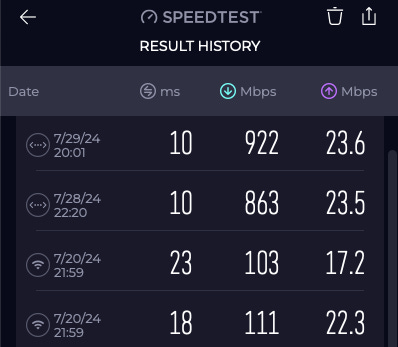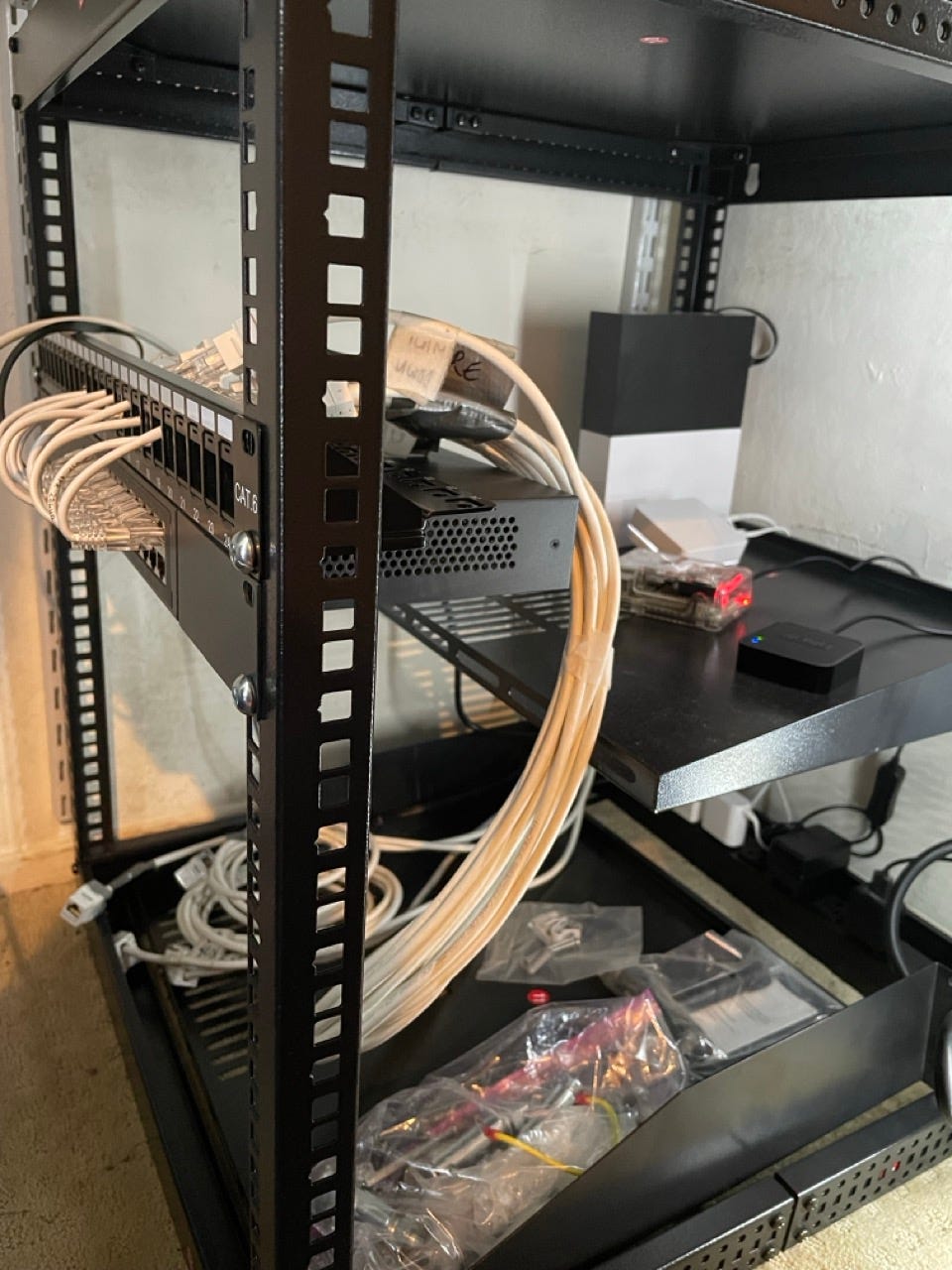Wired home internet
We recently completed a home improvement project to install ethernet cables in our old home and I'll share my experiences in this post. We already had a gigabit internet connection and a wifi 6 router with dual bands. Theoretical speeds are supposed to be ~2gbps throughout our relatively mid size home. However practically I used to get around just 120 mbps peak from my desk. There are also some wifi black spots where the wifi speed dropped to around 20mbps. Generally we have a usable network for the most part. However the number of devices and media consumption in the house has been increasing - summer vacation with kids at home! That caused further load degradation of the network.
After setting up the new network, connection speeds to the internet are maxing out at around 900Mbps. Buffering during streaming and video calls has massively reduced which is a perceptible change.
I did research options for improving my network. A mesh wifi upgrade could be an option for some. However the newer mesh systems also cost over $1k and now include subscription services. Getting a wired connection setup was more painful than upgrading wifi but feels more future proof.
This article had many good pointers on setting up a wired home network. The first step was planning where the devices would be placed. I have the internet modem and router in one bedroom, and planned to add a switch in the shoe closet in the center of the home. Each room now has a couple of ethernet ports.
For ethernet cabling, there are many options, but I ended up with a basic CAT 6 cable. CAT 6 has a theoretical speed of up to 10 Gbps for a distance till to 55m or 180 ft which was more than sufficient for my home. The devices that I have support up to 1Gbps only anyways so it feels like this setup should last for some time. In US homes, adding ethernet wiring is simpler because of the wooden and drywall walls. If you cannot drill, then adding an external channel can also work to connect wires.
The project was partly DIY since the electrician did set up any jacks and I got to do some of that. In the walls, keystone jacks needed to be set up. Splicing the ethernet cable, attaching the wires to the jack with a punch down tool and testing with a network tester are needed. There are a few basic tools needed for this. Making ethernet cables was interesting with pass through rj45 jacks as well. Got to use some more tools for that task.
All the wires from the rooms end up in a central location where you need to add a switch. I decided to build a mid-range setup with a server rack. For a neater use of cables, there is a jack connection panel called a patch panel. I've shifted some smart home devices there too. In the future adding a storage device should also be possible.
Smart home automation should be the next major project once I can secure spousal funding.



Never understood why upload speeds are very low as compared to download speeds. In India in 2022, I had broadband connection which gave upload speed of 500mbps+ easily. Also at other homes it was similar. Never saw this much upload speed in US, unless you get static IP and special connection from comcast or at&t